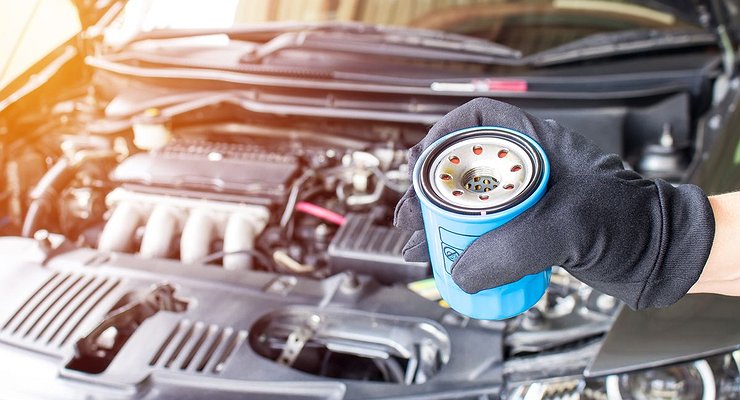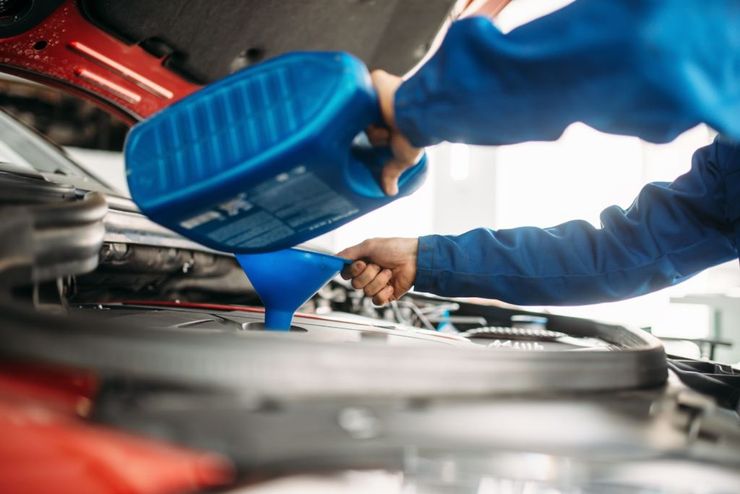Do I have to fill the filter when changing the oil in the engine?
- December 29, 2022
- 0
Changing the engine oil is one of the easiest maintenance tasks on a car, but it also has its own “subtleties”. For example, many users of the World
Changing the engine oil is one of the easiest maintenance tasks on a car, but it also has its own “subtleties”. For example, many users of the World

Reading blogs and forums, you can find a lot of interesting tips, the lion’s share of which excites the mind until you try to apply them in life. That is, you begin to act and understand that the author did not say anything, but somewhere missed the main thing. In addition, many “special cases” turn out to be generally useless. True, their mention is not so common. Whether the matter is oil in the filter: this has been gossiped about for a year!
The supporters of this process are convinced that in the first moments of starting after changing the lubricant, the engine can run “dry”, which is extremely harmful to the cylinder-piston group. For example, the oil pump will not have time to pump to the target, the pistons will scratch the cylinders. It sounds intimidating, we agree, because bullies are a direct route to a shot. Therefore, many drivers prefer to exaggerate and act according to the advice.
However, the main and most important document for car maintenance is not the forum page and public opinion, but the manufacturer’s legal documentation, which the same dealers must adhere to. To hold or not – another question. But in our case, the answer to that lies right there. And it has no alternative: in the manuals there is no mention of pouring engine oil into the filter. Whatever brand it is.
The second argument against is the position of master mechanics. Here, too, there were no contradictions: the specialist ‘techies’ from Toyota, Mitsubishi, Honda and Mercedes-Benz laugh with one voice. The difference between a new and a used engine in the amount of oil poured in is about 700 grams. This amount remains with a normal replacement in the internal combustion engine. Is it enough to prevent bullying? Doubtless. How fast does new grease get from the crankcase to the cylinders? Almost immediately: you can see it when you start the engine with the valve cover removed.
So where did the idea come from to pour oil into the filter? Maybe it’s because of the need to lubricate the rubber seal on the filter, which actually fits better and lets through less when primed. A few drops fell in – the user saw this and changed it. The other option is historical. Many old domestic trucks required filter lubrication. Only now it is not oil, but air: it is moistened with a special compound so that it collects more dirt, allowing only clean air to enter the internal combustion engine. They also do this on sports cars with a zero-resistance filter and on many motorcycles.
When changing the oil, the new composition must be poured into the oil filler, behold, the quantity is strictly measured and overflow is prevented. It is worth choosing a high quality filter that will do its job and withstand the monstrous pressures in the system, a good lubricant suitable for a particular engine as recommended by the manufacturer, and carefully tighten the drain plug. turn without breaking the pan, but without forgetting the copper ring, if necessary. And that’s all.

Reading blogs and forums, you can find a lot of interesting tips, the lion’s share of which excites the mind until you try to apply them in life. That is, you begin to act and understand that the author did not say anything, but somewhere missed the main thing. In addition, many “special cases” turn out to be generally useless. True, their mention is not so common. Whether the matter is oil in the filter: this has been gossiped about for a year!
The supporters of this process are convinced that in the first moments of starting after changing the lubricant, the engine can run “dry”, which is extremely harmful to the cylinder-piston group. For example, the oil pump will not have time to pump to the target, the pistons will scratch the cylinders. It sounds intimidating, we agree, because bullies are a direct route to a shot. Therefore, many drivers prefer to exaggerate and act according to the advice.
However, the main and most important document for car maintenance is not the forum page and public opinion, but the manufacturer’s legal documentation, which the same dealers must adhere to. To hold or not – another question. But in our case, the answer to that lies right there. And it has no alternative: in the manuals there is no mention of pouring engine oil into the filter. Whatever brand it is.
The second argument against is the position of master mechanics. Here, too, there were no contradictions: the specialist ‘techies’ from Toyota, Mitsubishi, Honda and Mercedes-Benz laugh with one voice. The difference between a new and a used engine in the amount of oil poured in is about 700 grams. This amount remains with a normal replacement in the internal combustion engine. Is it enough to prevent bullying? Doubtless. How fast does new grease get from the crankcase to the cylinders? Almost immediately: you can see it when you start the engine with the valve cover removed.
So where did the idea come from to pour oil into the filter? Maybe it’s because of the need to lubricate the rubber seal on the filter, which actually fits better and lets through less when primed. A few drops fell in – the user saw this and changed it. The other option is historical. Many old domestic trucks required filter lubrication. Only now it is not oil, but air: it is moistened with a special compound so that it collects more dirt, allowing only clean air to enter the internal combustion engine. They also do this on sports cars with a zero-resistance filter and on many motorcycles.
When changing the oil, the new composition must be poured into the oil filler, behold, the quantity is strictly measured and overflow is prevented. It is worth choosing a high quality filter that will do its job and withstand the monstrous pressures in the system, a good lubricant suitable for a particular engine as recommended by the manufacturer, and carefully tighten the drain plug. turn without breaking the pan, but without forgetting the copper ring, if necessary. And that’s all.
Source: Avto Vzglyad
Donald Salinas is an experienced automobile journalist and writer for Div Bracket. He brings his readers the latest news and developments from the world of automobiles, offering a unique and knowledgeable perspective on the latest trends and innovations in the automotive industry.